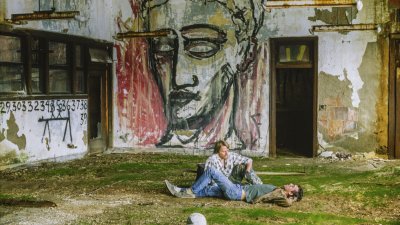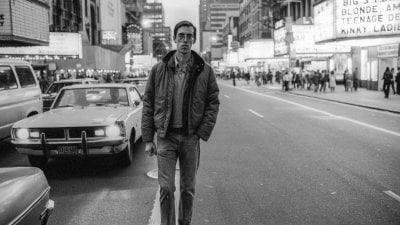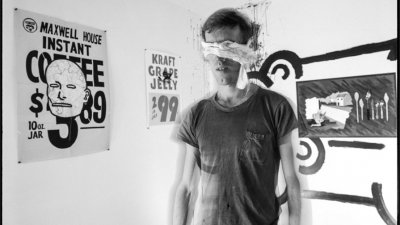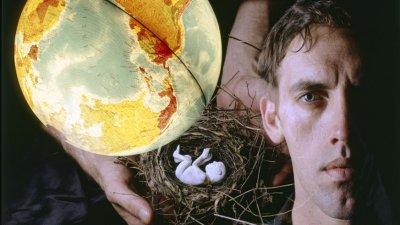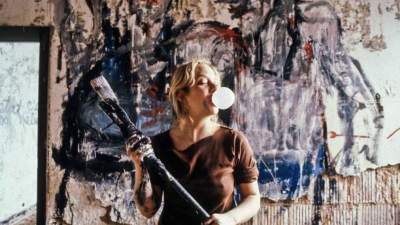The New York Times recognises lecturer Andreas Sterzing
05 November 2020
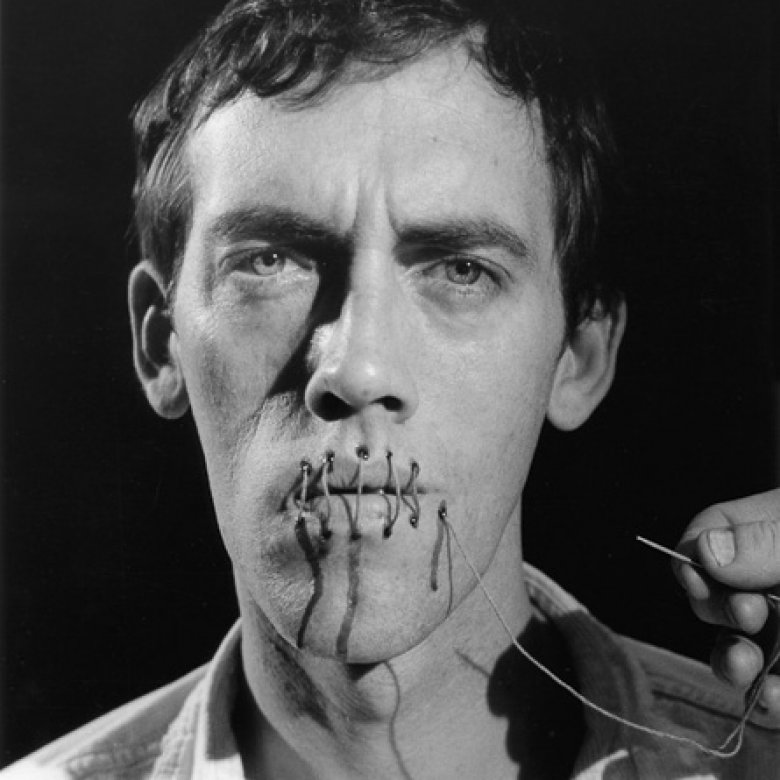
In 1987 the artist David Wojnarowicz was diagnosed with AIDS. Fuelled by anger and frustration, Wojnarowicz asked his friend Andreas Sterzing to photograph him. The resulting artwork by Andreas, currently Senior Lecturer at Falmouth University’s Institute of Photography, has recently been listed by the New York Times as one of the 25 most influential works of American protest art since the Second World War. The image shows the artist with a sewn mouth and was created for Rosa von Praunheim’s film ‘Silence = Death’.
We talked to Andreas about the highs and lows of 1980s New York, the parallels that can be drawn with today’s world and his thoughts on the power of creativity.
New York City in the 1980s was not the liberal metropolis we know it as today. The city was emerging from near bankruptcy in the '70s, and it showed.
Decrepit buildings lined the streets of Manhattan. Drug usage was rampant and homicides were at near record highs. This was New York before gentrification, a time when sex shops rather than Starbucks was the norm, a moment where living in what is now one of the most expensive cities in the world could be done on a shoe-string budget.
It was the perfect background for Andreas Sterzing’s early artistic endeavours. After studying photography in Munich, he had an appetite for travel and was keen to make his mark as a photographer. The only question was whether to head for the beaches of California or the gritty urban terrain for which New York was famed. Fortunately for Andreas he chose the latter and moved to Brooklyn, before settling in New York’s East Village.
The community was heavily influenced by its resident artists; ambitious murals were painted over crumbling buildings and pop-up art installations breathed new life into a destitute neighbourhood. In one image taken by Andreas, performance artist Stelarc hangs above a street, suspended in the air by hooks inserted into the skin on his back. In others, children dance through water spraying from a fire hydrant, block parties spring up out of nowhere and graffiti is scrawled on any available surface. Whilst creativity was abundant in the East Village, Andreas did not confine himself to its quarters.
What’s important for anybody who is creative or working in the arts is to be fearless and to do something that they feel really strongly about and to have a voice and to get that out, to not be inhibited by any authority or anything anyone says to you. Just do something. Be courageous.
In 1983 the young German photographer came across Pier 34, an enormous derelict building jutting into the Hudson River. It was easier for cash-strapped city officials to abandon it rather than tear it down. Since the decline of New York as a port, the piers had been put to new uses. “There were people going there at all hours, having parties, having sex, drinking, doing drugs, but also making art."
David Wojnarowicz and fellow artist Mike Bidlo began using the building for their own artistic purposes. After telling friends about it, Pier 34 became a hub for local artists.
The art created inside Pier 34 was remarkable in its range: paintings, pop art, stencilled windows, frescoes, sculptures and installations. Artists shared supplies and collaborated on group projects. It was a wonderland, a blank canvas for New York’s young artists to use as they wished. From Wojnarowicz’s iconic ‘Gagging Cow’ to Luis Frangella’s murals, the Pier quickly came to house works that would rival any exhibition presented at the biggest art galleries in the world. As Andreas puts it, “… going into that building … it did something to my mind. It was almost like a meditation. Being in there felt like being on a different planet.”
One of the magical qualities that made Pier 34 special was the anonymous nature of the work. Artists didn’t sign or sell their creations – this was art for art’s sake.
Andreas had struck gold, finding compelling art and new friendships at Pier 34. He started documenting everything he saw, photographing the building, the artists and the work. He felt that the body of images was strong, and took them to publications in Germany. Stern Magazine bought the photos and agreed to run them as a feature story - it was postponed due to world events - but ran later, launching Andreas’ career.
The East Village art scene was on the rise, but it coincided with the emergence of AIDS, a disease that continues to have a devastating impact all over the globe. Among those who worked at Pier 34 and were lost to the epidemic were Keith Davis, Luis Frangella, Rob Jones, Peter Hujar, Huck Snyder and David Wojnarowicz.
Wojnarowicz’s art became more political after his diagnosis in 1987. He wanted to put the spotlight on how the epidemic was being handled by the Reagan administration. Wojanrowicz’s portrait, cited by the New York Times, was created for the film Silence = Death, directed by German filmmaker and gay rights activist Rosa von Praunheim, and was intended to be used for a poster for the film. It is now widely recognised as a significant piece of art in its own right.
Referring to his work on Pier 34 and the East Village artists, Andreas said, “It took a whole generation, 30 years later and suddenly it came up again. It’s something that I always wished to happen, and it happened in a way that I couldn’t imagine.”
In the final years of his life, Wojnarowicz channelled his feelings into his art. Images such as ‘Silence = Death’ demonstrate his anger, anxiety and frustration at the treatment of the queer community in New York. There are parallels to be drawn between 1980s New York and our present situation. Today we are facing a new pandemic and fighting our own cultural and societal challenges; coronavirus restrictions are changing regularly, the impact of Brexit is still to be understood and across the world we are tackling a global environmental crisis. How can we channel those feelings toward creating a positive difference?
“What’s important for anybody who is creative or working in the arts is to be fearless and to do something that they feel really strongly about and to have a voice and to get that out, to not be inhibited by any authority or anything anyone says to you. Just do something. Be courageous.”
If you would like to learn more, take a look at Andreas' website, explore the East Village or step inside Pier 34.
